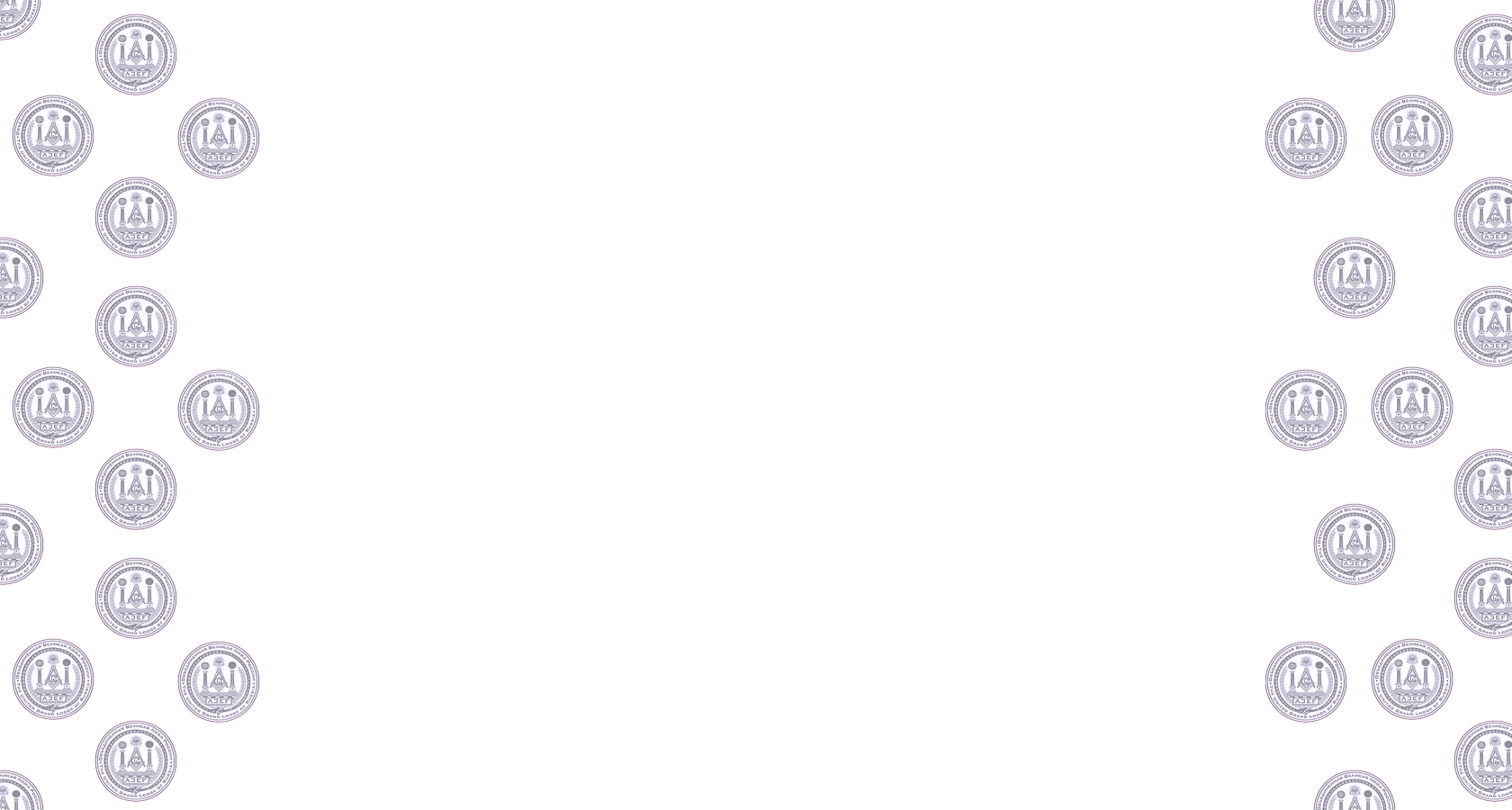A sinister global conspiracy? Mysteries and myths of Freemasons in Russia
From drunks in armor to important statesmen, how the masons made history


Georgy Manaev
According to legend, Peter the Great was Russia's first Freemason, though that claim is highly contended. For certain, other famous Russians later on joined their ranks: from the great poet Alexander Pushkin, to the head of the 1917 Provisional Government, Alexander Kerensky. Masonic lodges in Russian history had an ambiguous reputation and were banned several times. Why did some Russians fear the masons, and did they influence state policy?
English origins
Freemasonry came to Russia in 1731 when Grand Master of the Grand Lodge of England Lord Lowell appointed Captain John Phillips Grand Master of Russia, who subsequently preached among a small circle of foreigners in the service of the Russian Empire. Basically, in Russia the lodge was needed to accommodate local English merchants who were also masons and who demanded that the "center" allow them hold official masonic assemblies.
| What is Freemasonry? It's believed that Freemasonry appeared in Antiquity among stonemasons who built places of worship. They lived on construction sites and hid their instruments in special places called lodges where they also held assemblies to discuss their professional secrets. That's why masonic congregations are today called "lodges." According to legend, Freemasonry descended from King Solomon, who, to build his temple in Jerusalem, invited architect Hiram Abiff. Workers were divided into three classes, which became the foundation of Freemasonry's three degrees: student, apprentice and master. Masons have secret symbols, words and gestures, which help identify their fellow masons anywhere in the world without revealing themselves to the uninitiated. Freemasonry is divided into two branches: operative (the ancient form related to physical labor), and speculative (philosophical), which developed in the 18th century. The numerous masonic lodges function in accordance with various charters (rules), which throughout their history have been in conflict with each other. Freemasonry's main goal is perfection of the human being and spirit, symbolized by the grinding of stone (the image of man), which must have a regular form to become a part of the great edifice of existence designed by the Great Architect of the Universe, God, who is revered by each mason. |
Masons building the Rotes Rathaus (Red City Hall) in Berlin
The Russian nobility began joining the brotherhood only in the 1740-1750s, and in this period Freemasonry was more of a fashion rather than a calling. Members of the first Russian lodge, which was headed by Count Roman Vorontsov, were aristocrats with important historical surnames: Sumarokov, Golovin, Golitsyn, and etc.
By the beginning of Catherine the Great's reign, Freemasonry was already so popular among the elite that it began attracting the government's close attention. The reason was not only that Peter III - Catherine's husband who she overthrew to seize power - was an active patron of the masons, but it was mostly the fact that Russian masonic lodges were managed by foreign Grand Lodges, something that Czarist authorities saw as a danger.
By the beginning of Catherine the Great's reign, Freemasonry was already so popular among the elite that it began attracting the government's close attention. The reason was not only that Peter III - Catherine's husband who she overthrew to seize power - was an active patron of the masons, but it was mostly the fact that Russian masonic lodges were managed by foreign Grand Lodges, something that Czarist authorities saw as a danger.
Drunkenness and enlightenment
The masonic assemblies in Russia in the 1750-1760s functioned according to the "Strict Observance" charter developed by the German neo-Templar Order. The assemblies resembled costumed performances: clad in iron, adorned with plumes and feathers. The brothers gathered to discuss masonic issues; political debates and discussions were forbidden at such assemblies. Then, during the "agape"(the friendly dinner that followed the discussions) they usually got heavily drunk.
Such "knightly" assemblies were popular among Russian nobles, who in the 18th century all served in the military. They had little to do with real Freemasonry, however, and the state official and poet Ivan Yelagin said he joined the fraternity because of vanity and the desire to secure the patronage of high-ranking individuals in masonic circles.
Such "knightly" assemblies were popular among Russian nobles, who in the 18th century all served in the military. They had little to do with real Freemasonry, however, and the state official and poet Ivan Yelagin said he joined the fraternity because of vanity and the desire to secure the patronage of high-ranking individuals in masonic circles.

Ivan Yelagin
O. Przhslavsky wrote that, "When in a circle of officials the selection of candidates for a vacant position depended on a mason, and if one candidate was a mason, then regardless of the criteria for the selection, the chosen candidate was always a mason."
Yelagin was soon disillusioned with the "Strict Observance" charter, and in the early 1770s he received a license from the Grand Lodge of England to form a Freemasonry lodge in Russia. At the same time, German Baron George von Reichel also established a masonic fraternity in St. Petersburg that functioned according to the Swedish Zinnendorf system.
While Yelagin's embraced a mostly of a mystical search for the masonic "mystery," adherents of the Zinnendorf system aspired only to self-perfection. Despite the large number of lodges (in Moscow alone there were 27 in the 18th century), the Russian masons were not so numerous. In Yelagin's lodge were only 400 people, but in 1776 the two systems united, though friction continued between them.
The battle between Yelagin and Reichel was fought in St. Petersburg, but towards the end of the 1770s Moscow lodges began to have more influence. Publisher Nikolai Novikov played the most important role in this period, and he was part of the delegation of Russian masons at the historic Wilhelmsbad Masonic Convention in 1782 in which Russia was recognized as a separate masonic province.
Yelagin was soon disillusioned with the "Strict Observance" charter, and in the early 1770s he received a license from the Grand Lodge of England to form a Freemasonry lodge in Russia. At the same time, German Baron George von Reichel also established a masonic fraternity in St. Petersburg that functioned according to the Swedish Zinnendorf system.
While Yelagin's embraced a mostly of a mystical search for the masonic "mystery," adherents of the Zinnendorf system aspired only to self-perfection. Despite the large number of lodges (in Moscow alone there were 27 in the 18th century), the Russian masons were not so numerous. In Yelagin's lodge were only 400 people, but in 1776 the two systems united, though friction continued between them.
The battle between Yelagin and Reichel was fought in St. Petersburg, but towards the end of the 1770s Moscow lodges began to have more influence. Publisher Nikolai Novikov played the most important role in this period, and he was part of the delegation of Russian masons at the historic Wilhelmsbad Masonic Convention in 1782 in which Russia was recognized as a separate masonic province.
Prison as the price for enlightenment
Serious work began in Moscow lodges after the convention, and the goal now was to enlighten people, and in a broader sense, to cultivate the public's taste. Nikolai Novikov began publishing books in the 1770s, and in 1780 he opened Moscow's first public library, gathering funds from notable masons to establish a press and book stands all over Russia.

Nikolai Novikov
He published primers, textbooks and Western classics. In 1788, he published up to 40 percent of all Russian books and magazines, among which was masonic literature. But what attracted the attention of authorities was not masonic literature but the fact that Novikov's magazines were reporting on events of the Revolutionary War in North America.
The magazines were inspected by Moscow Metropolitan Platon II, who found only six "damaging" issues and said of Novikov that, "I pray to God that Christians in the whole world could be like Novikov."
Nevertheless, persecutions did not end, and in 1791 the press was closed and Novikov was investigated when a secret printing press was found on his estate. A year later he received a 15-year prison sentence as a state criminal. Other important freemasons were punished with internal exile.
From that time on Freemasonry in Russia was basically banned. While four years later the new Russian emperor, Paul I, pardoned Novikov and his colleagues, the publisher did not return to his former book-publishing activities and spent the last years of his life on his estate in Avdot'ino, dying in 1818.
By the way, when in 1812 Napoleon's army entered Russia, Novikov's estate was left untouched, because many French officers were masons. The same thing happened at Bolshiye Vyazemy, the Golitsyn mansion near Moscow. The walls were decorated with images of apples and acacia, famous masonic symbols. The Golitsyns were well-known in Europe as prominent masons.
The magazines were inspected by Moscow Metropolitan Platon II, who found only six "damaging" issues and said of Novikov that, "I pray to God that Christians in the whole world could be like Novikov."
Nevertheless, persecutions did not end, and in 1791 the press was closed and Novikov was investigated when a secret printing press was found on his estate. A year later he received a 15-year prison sentence as a state criminal. Other important freemasons were punished with internal exile.
From that time on Freemasonry in Russia was basically banned. While four years later the new Russian emperor, Paul I, pardoned Novikov and his colleagues, the publisher did not return to his former book-publishing activities and spent the last years of his life on his estate in Avdot'ino, dying in 1818.
By the way, when in 1812 Napoleon's army entered Russia, Novikov's estate was left untouched, because many French officers were masons. The same thing happened at Bolshiye Vyazemy, the Golitsyn mansion near Moscow. The walls were decorated with images of apples and acacia, famous masonic symbols. The Golitsyns were well-known in Europe as prominent masons.
A sip of freedom
Although he sympathized with Freemasonry, Emperor Paul didn't lift the ban and didn't assume the title of Grand Master of Russia. He preferred to become Grand Master of the Maltese Knights. Freemasonry resumed during the reign of his son, Alexander I, and the liberal nature of the first years of his rule helped the development of Freemasonry - new lodges were opened and the number of masons increased. Among them were Grand Prince Konstantin Pavlovich, poet Alexander Pushkin's uncle Vasily Lvovich, the famous statesman Mikhail Speransky, General Mikhail Kutuzov and many others.
Towards the end of his reign Alexander became increasingly conservative and suspicious. Rumors and facts concerning secret societies worried the Emperor, and in 1822 he published the decree, "On the Destruction of Masonic Lodges and All Secret Societies."
Towards the end of his reign Alexander became increasingly conservative and suspicious. Rumors and facts concerning secret societies worried the Emperor, and in 1822 he published the decree, "On the Destruction of Masonic Lodges and All Secret Societies."
The allure of mystery
Masonic and similar lodges began opening again in Russia during the empire's twilight. In the early 20th century, there were many lodges whose charters and rules were in conflict with one another. Anyway, they didn't have much influence on the country's political life.
Even though many members of the Provisional Government were masons, such as its chairman Alexander Kerensky, the harsh political conditions of early 20th century masonic discussions were drowned out by more serious issues. According to Evgeny Pchelov, an expert on Romanov history and genealogy, "thinking there was a masonic conspiracy behind the February Revolution is an exaggeration and a conspiracy theory."
Even though many members of the Provisional Government were masons, such as its chairman Alexander Kerensky, the harsh political conditions of early 20th century masonic discussions were drowned out by more serious issues. According to Evgeny Pchelov, an expert on Romanov history and genealogy, "thinking there was a masonic conspiracy behind the February Revolution is an exaggeration and a conspiracy theory."

A ring with masonic symbols
Pchelov thinks that the legend claiming Peter the Great was a mason can be characterized in the same manner. "There are no documents, no evidence to prove this, and it's completely impossible: legend says the Czar joined the masons during his Grand Embassy visit to Europe (1697-1698) before the official formation of Freemasonry in 1717."
In every era of masonic history, we encounter myths and mysteries concerning what it was about Freemasonry that attracted wealthy and notable Russians. One can only wonder what the future of Freemasonry will now be in Russia. It was reborn in Russia in 1990, when Georgy Dergachev became a mason.
In every era of masonic history, we encounter myths and mysteries concerning what it was about Freemasonry that attracted wealthy and notable Russians. One can only wonder what the future of Freemasonry will now be in Russia. It was reborn in Russia in 1990, when Georgy Dergachev became a mason.
In 1991, in accordance with the Grand Orient de France license, the first new masonic lodge was established in Moscow. The Grand Lodge of Russia was established in 1995 and since then has opened almost 50 lodges. Russia's current Grand Master is politician Andrei Bogdanov, who in 2008 ran for the Russian presidency. One can only wonder - was this part of a sinister plot by the masons to seize power in Russia, or merely the case of a concerned and enlightened citizen willing to contribute to society's improvement?

Text by: Georgy Manaev
Edited by Oleg Krasnov
Images credits: The Grand Lodge of Russia, Märkisches Museum Berlin, Grigory Serdyukov, Anton Losenko, State Tretyakov Gallery, Dmitry Levitzky, Albert Mckay, Christophe Dioux, British Museum, George Kenning, Laurence Dermott, Vick Romanoff
Design and layout by Anastasiya Karagodina
© 2017 All Right Reserved.
Russia Beyond The Headlines
info@rbth.com
Edited by Oleg Krasnov
Images credits: The Grand Lodge of Russia, Märkisches Museum Berlin, Grigory Serdyukov, Anton Losenko, State Tretyakov Gallery, Dmitry Levitzky, Albert Mckay, Christophe Dioux, British Museum, George Kenning, Laurence Dermott, Vick Romanoff
Design and layout by Anastasiya Karagodina
© 2017 All Right Reserved.
Russia Beyond The Headlines
info@rbth.com


